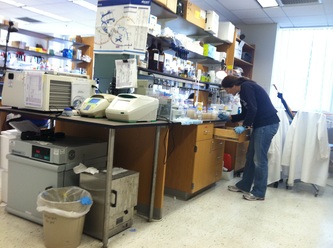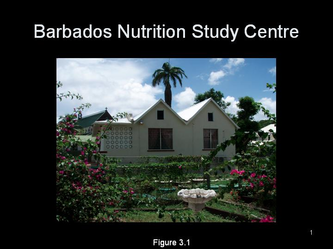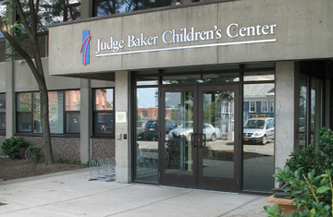|
7/24/2012 0 Comments You Think What you Eat: Link between mental health, DNA and malnutrition - Week 2Week 2: A Day in the Life...by Riana Balahadia Sites of Translation: Unraveling the Genes of Barbados It’s hard to define a “typical day” working for the Barbados Nutrition Study—and that isn’t a bad thing. This internship allows me to work in three different locations: Dr. Galler’s office in Brookline, Judge Baker’s Children Center in Mission Hill, and UMass Medical School in Worcester. Aside from the newly-increased MBTA fares, the change in scenery keeps things interesting and exciting. Even more importantly, working in multiple environments has made the connection between an evolutionary perspective and global health clearer to me. Dr. Galler’s office basement holds towers of data since the 1970s, from teacher assessments of post-malnourished children to the psychiatric clinical interviews of those same kids later as adults. My two co-workers and I are working on organizing this data and making sense of it for future papers. It’s actually quite enlightening sifting through this history; we’ve seen some interesting commentary on people potentially undiagnosed with some mental or heart disorder. Here, the connection between the papers I’ve read and the Barbadian people come alive. Collectively, those musty, yellowed pages reveal the lasting impact of child malnutrition. The truth is, this impact goes beyond the sad infomercials about starving boys and girls in developing countries. Starvation at that critical point of development means dire consequences into adulthood, even after the child is rehabilitated to a normal weight early on. It affects the child’s mind, health, family relationships, and future ability to make a living—so the cycle of child malnutrition and adult poverty continues. Judge Baker’s Children Center is the main center where Dr. Galler conducts her research and her collaborating teams meet. My specific project is to link nutrition and epigenetics to mental health. Two questions asked by the Barbados Nutrition Study are whether perinatal malnutrition can lead to mental disorders and what the epigenetic mechanisms are. To answer these questions, we look at the Barbadian cohort data that has already been collected. We’re also deciding on genes to study (that’s my job!) in malnourished and stressed rats. Hopefully we will then examine these genes in blood samples of the Barbadian cohort. So far, I’ve researched genes that are up- or down-regulated in conditions like ADHD or schizophrenia. But it’s harder to find studies on malnourished rats, or even on a human population that went through a brief famine. Apparently the connection between nutrition and the brain is not a highly-researched topic. Finally, I am working with Dr. Galler’s phD student, Ana, at the UMass lab. Traveling there takes up most of my day, but once I arrive, I learn the technical procedures of the rat studies. Their brains are already harvested and separated, so we perform Western blot and ChIP DNA experiments to see which proteins of the genes we’re studying are expressed in stressed and malnourished rats. In my previous post, I mentioned my interest in child malnutrition and the resulting adult complications with obesity and chronic diseases. The evolutionary reasons for this are not new, and in a way the hypothetical connection makes sense (search Developmental Origins of Health and Disease). Learning about malnutrition’s link to mental and neurological diseases adds a whole new element. These additional consequences of malnutrition make it even more difficult to lift oneself out of poverty through education—a very important issue in developing countries. Granted, Barbados has done quite well over the decades, and, today, hardly anyone is starving. But the effects of past starvation still remain. It will be very interesting to see what happens in generation two, the children of the original previously malnourished children… About the Blogger
0 Comments
Your comment will be posted after it is approved.
Leave a Reply. |
The Lab JournalWelcome to the summer internship series of 2012! Follow 9 Scientista bloggers through their summer internships to catch a glimpse of what it is like to be a scientista^TM. By Title- India Presents: A "New World Symphony"
- Through The Lens: The Intricacies Of Diabetes - Do Nanoparticles Glow? - Using Unusual Animals to Study Human Disease - Using the Hubble Telescope - You Think What You Eat - Experimenting With the Life of a Scientist(a) - 18.085: My Summer at MIT - Science Heals: A Summer of Global Health Research By BloggerRabeea Ahmed
Riana Balahadia Shaira Bhanji Nzuekoh Nchinda Amy Beth Prager Natalie Punt Juliet Snyder Pin-Wen Wang Stephanie Wang Archives |
The Scientista Foundation, Inc. All Rights Reserved © 2011-2021 | Based in NY | [email protected]
The Network for Pre-Professional Women in Science and Engineering
The Scientista Foundation is a registered 501(c)(3) -- Donate!
The Network for Pre-Professional Women in Science and Engineering
The Scientista Foundation is a registered 501(c)(3) -- Donate!





 RSS Feed
RSS Feed